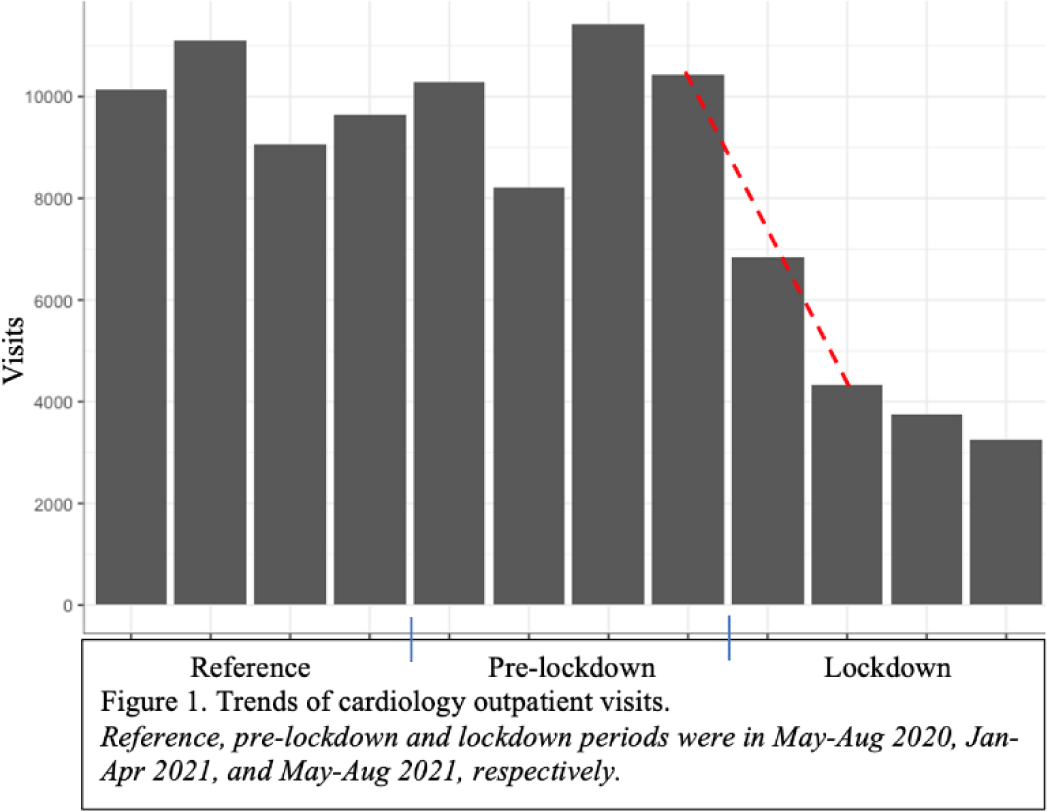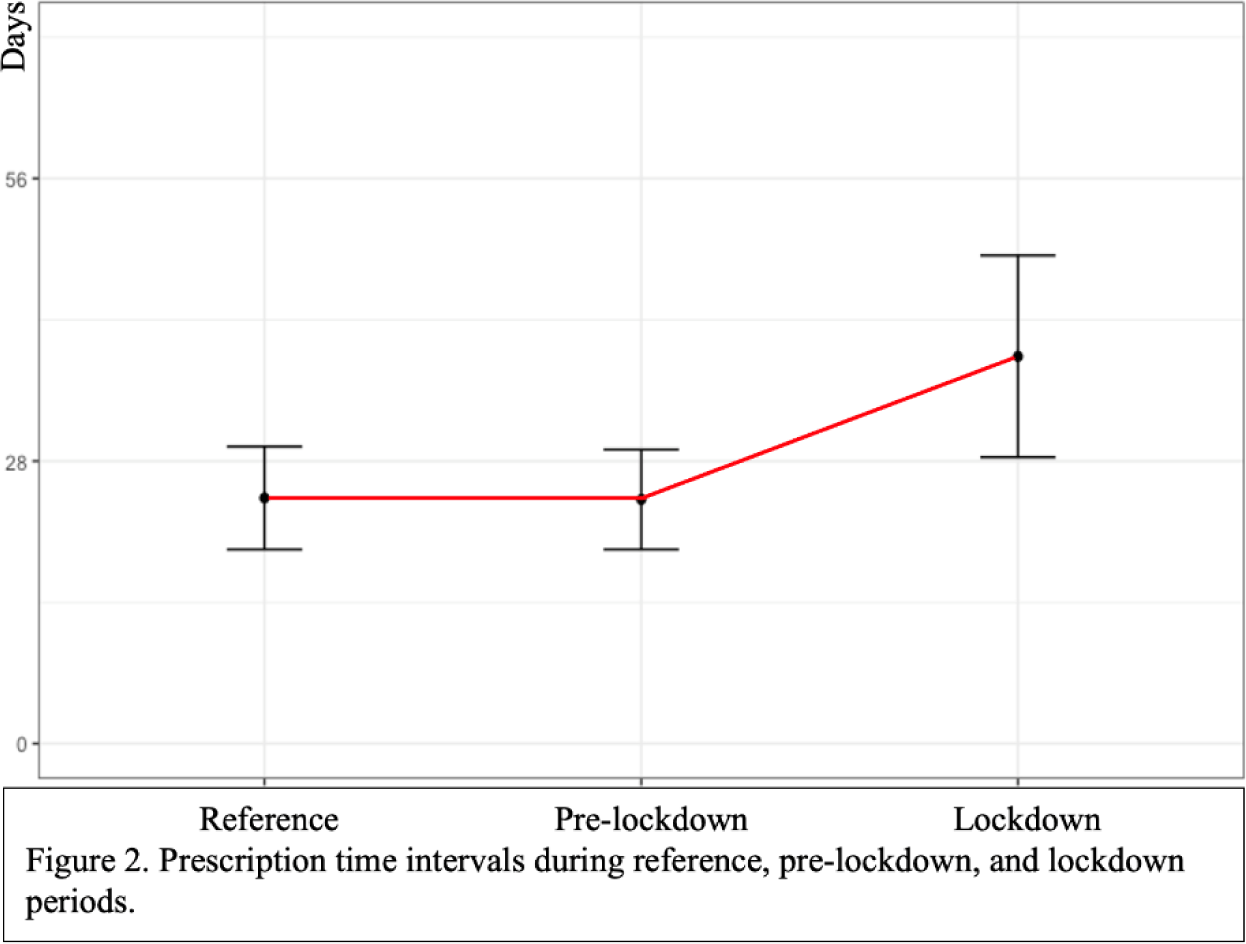1. INTRODUCTION
COVID-19 pandemic is a global health problem that poses a burden on the healthcare system. In Vietnam, the fourth outbreak of COVID-19 began on April 27th until September 31st, 2021 during which Ho Chi Minh city was the most affected area [1]. The number of new COVID-19 cases was at its peak on August 27th with over 17,000 patients nationally [2]. Various means of intervention including social distancing and lockdown were deployed to minimize the virus transmission [1]. With the high occurrence of virus variants, the healthcare system has to prepare for the next COVID-19 outbreaks in the future [3].
COVID-19 not only impacts the infected patients but also the non-COVID-19 ones. It was shown that death rates increased not only in COVID-19 but also in the non-COVID-19 group [4]. The number of emergency department visits, hospital admission, and outpatient checkup reduced substantially in the non-COVID-19 group during the lockdown. Subsequently, this decrease caused an increase in mortality especially in vulnerable specialties for both acute and chronic non-COVID-19 diseases [5-11].
To better understand this phenomenon, we analyzed the outpatient data of a tertiary public general hospital, Nhan dan Gia Dinh, in Ho Chi Minh city with a focus on the lockdown period during the fourth COVID-19 outbreak. Cardiology specialty was chosen since the majority of cardiovascular diseases need careful care with routine outpatient follow-up. We aimed to evaluate the magnitude of the visit reduction and the possible effects on prescription behavior.
2. MATERIALS AND METHOD
A retrospective observational study was conducted. We analyzed the extracted data from the healthcare informative system of Nhan dan Gia Dinh hospital in which the cardiology outpatient clinics were the targets of investigation.
The study time was divided into three 4-month periods which were defined as (1) the lockdown period during the fourth COVID-19 outbreak was from May 1st to August 31st, 2021, (2) the pre-lockdown period was from January 1st to April 30th, 2021, and (3) the reference period is from May 1st to August 31st, 2020 with the hypothesis that the non-communicable chronic cardiovascular diseases were not affected substantially by weather variation. The lockdown period was chosen as aforementioned consisting of the peak of infection cases in August 2021 while there was no COVID-19 outbreak in the same months of the year 2020 – the reference period. This way of comparison helped reveal the impact of COVID-19 on outpatient visits, minimizing the effects of other confounding factors.
The confidentiality of enrolled patient data was highly respected by the encoding of private information. This study was approved by the Institutional Review Board of Nhan dan Gia Dinh hospital (81-NDGÐ-HÐÐÐ).
Non-COVID-19 cases were identified by excluding the suspected or confirmed COVID-19 from the diagnosis and/or ICD-10 code. In the present study, the data extracted from the database were the following: monthly number of cardiology outpatient visits, patient characteristics (age, gender, health insurance status, location), diagnoses, and prescription characteristics (medications, time interval). Cases that lacked necessary information were excluded.
For the diagnoses, we worked with raw free-text data which had been input manually during the prescription. There were synonyms in diagnosis and the usage of which depended on doctors’ favors and habits. As the evaluation targets were common chronic diseases, one list of diagnoses was made manually from the data of May 2020 and used as keywords that were confirmed again by the doctors participating in the clinics. From the searching list, each diagnosis was extracted from the whole data and classified into groups according to the current guidelines of our hospital. The prescribed medications were collected and categorized into groups based on the ingredients. Other information was extracted directly from the database.
Collected data were checked for completeness and errors after input using Excel. Data analyses were performed using Stata version 13.0 and R version 3.5.1.
We described and displayed monthly trends of cardiology outpatient visits, demographic information, diagnoses, and prescription characteristics divided into three periods of lockdown, pre-lockdown and reference. The model of disease and prescription behavior were also described. Supposing the geographic location might influence the accessibility to hospital services, Binh Thanh district along with other districts of Ho Chi Minh city as well as other provinces were separately displayed.
The demographic and clinical characteristics of the population were summarized using mean and standard deviation for quantitative variables and absolute and percentage frequencies for qualitative variables. The percentage frequencies were calculated within the respective periods and comparison among periods was conducted by Chi-squared test with p-value < 0.05 denoting statistically significant difference.
3. RESULTS
We recruited 100,031 outpatient visits to cardiology clinics of Nhan dan Gia Dinh hospital during the predetermined time course. The number of cardiology outpatient visits was stable at around 10,000 in the reference period. During the pre-lockdown, the visit number slightly reduced in February 2021. Notably, there was a sharp reduction of visits at the beginning of the lockdown and got plateau trend from June 2021 (Figure 1).

During the lockdown period, the number of visits was 50% lower than that of the reference and pre-lockdown one. There was no difference in the distribution of gender, age, health insurance status among the three periods except for the rate of visits from other provinces was 50% lower during lockdown period (p < 0.05) (Table 1).
All the diagnoses were reduced almost by 50% in the lockdown time including major cardiovascular conditions that required careful routine checkups like heart failure, atrial fibrillation, and mechanical valve. Notably, cancer had a prominent decrease of the concurrent conditions during lockdown time (p < 0.05) (Table 2).
There was half reduction of all types of medications but the distribution, notably those in guideline-directed medical treatment of heart failure was similar during the lockdown compared with other periods (Table 3).
The prescription time was similar in reference and pre-lockdown period but increased substantially during lockdown (Figure 2).

4. DISCUSSION
Nhan dan Gia Dinh hospital is the only tertiary public general hospital in the South-East area of Ho Chi Minh city. This hospital has a capacity of 1,500 beds and multiple specialties, and the daily number of outpatient checkups is over 4,000. Therefore, the results from our study are representative of other tertiary public hospitals in Vietnam.
During the lockdown period, the outpatient service for the non-COVID-19 group was maintained at an appropriate rate with adequate methods for COVID-19 prevention. However, there was a reduction of cardiology outpatient visits to as much as 50% at the time of the fourth COVID-19 outbreak. Cancer is a concurrent diagnosis that had a prominent reduction. Of note, cardiology outpatient clinics of Nhan dan Gia Dinh hospital receive referrals from nearby Oncology Hospital for pre-operation cardiovascular evaluation. This phenomenon of outpatient reduction was also reported in other countries with the same magnitude or even larger [5,6][11]. Other specialties and services including emergency department and hospitalization were also affected [8,9]. The associated factors for the decrease of non-COVID-19 patients coming to hospitals were lifestyle changes or fear of contagion, as well as the increasingly stringent lockdown measures and the postponement of elective procedures, or the sense of civic responsibility of the population [12]. Our study showed that patients from other provinces might get larger influence from COVID-19 outbreaks and further investigation is needed to understand the associated factors.
Right after the reduction of non-COVID-19 outpatient activities, there was an increment in mortality. Cardiology and oncology were the most reported specialties which had grave effects from COVID-19 outbreaks [7,8][13]. Heart failure had a substantial prevalence (8%) in our data. This diagnosis requires careful and frequent follow-up to up titrate the GDMT medications (guideline-directed medical treatment) and to access the need for further invasive intervention [14]. Any delay in the therapeutic plan might affect the prognosis certainly [15]. The other diagnosis like hypertension might have less strenuous management but there was no confidence about the availability of medications and appropriate assessment of treatment response.
During the COVID-19-induced lockdown, there was a national policy to increase the prescription interval to a maximum of 3 months which was 3 times longer than that of the non-lockdown period. This helped decrease the visit times thereby lessening the exposure risk to COVID-19. Accordingly, the prescription time was longer but not at the upper range of 3 months which might be due to the severity of the cardiovascular disease. This elongation of prescription time was useful in stocking the medications but could not give benefits in conditions in which timely combination and/or omission of the regimens were necessary for the treatment plan like heart failure, post-myocardial infarction, and stented coronary disease [14]. There was a report that the rates of GDMT prescription in heart failure were reduced during the lockdown [16]. As there was no change in the rates of diagnoses together with unchanged medication distribution during the lockdown period, it could be deduced that the individual prescription was not so affected in our study regarding the components.
Telemedicine was a potential method for outpatient checkups according to several reports [16-18]. This kind of healthcare service was shown to have similar time and good patient satisfaction especially in chronic conditions [19,20]. In the COVID-19 pandemic, telemedicine obviously can reduce the risk of transmission which is a disaster if occurs in those with cardiovascular diseases. Therefore, the demand and usage of telemedicine were increased significantly during the COVID-19 outbreak [16][18]. However, adequate attention should be paid to this alternative way particularly complex diseases such as heart disease whereby GDMT for heart failure was shown to be lesser in telemedicine than in face-to-face meetings [16]. Self-care education as well as telemonitoring measurements ought to be focused on because that helps consolidate the treatment decision from afar [14].
To our knowledge, we are the first to describe one vital aspect of the COVID-19 pandemic at cardiology outpatient clinics of Nhan dan Gia Dinh hospital, the results of which have high generalizability and representability to other Vietnamese tertiary hospitals. However, there are some limitations to our study. Firstly, we just described the phenomenon at one important specialty, cardiology which did not adequately represent the outpatient department. Secondly, the way of extracting diagnoses might overlook the data due to mistyping or being not included in the searching list. Thirdly, there was no concurrent information from the emergency department and hospitalization. Fourthly, we did not investigate the sequelae associated with the reduction of outpatient visits. And fifthly, the related factors of decreased number of outpatient visits were not focused targets of the study.
Conclusion
The fourth COVID-19 outbreak in Ho Chi Minh city posed a great impact on the decrease of non-COVID-19 cardiology outpatient visits during the lockdown period. More studies are necessary to elucidate the magnitude of the issue in every non-COVID-19 clinical service as well as related outcomes. This phenomenon has a high tendency to recur due to the reemergence of the next COVID-19 outbreaks that call for appropriate measurements to minimize adverse effects on non-COVID-19 patients.







